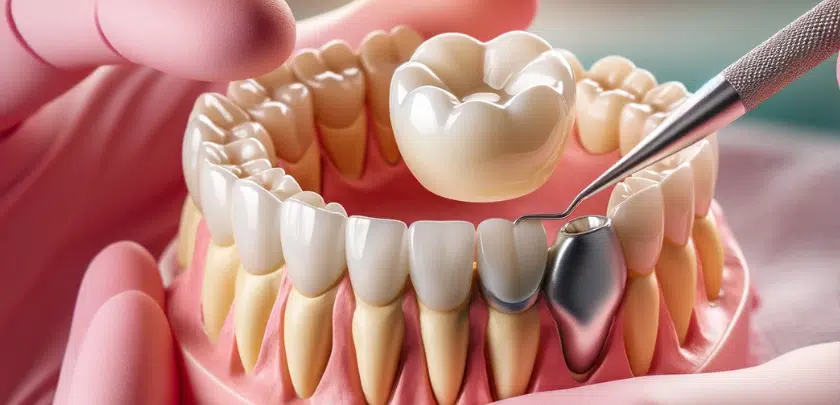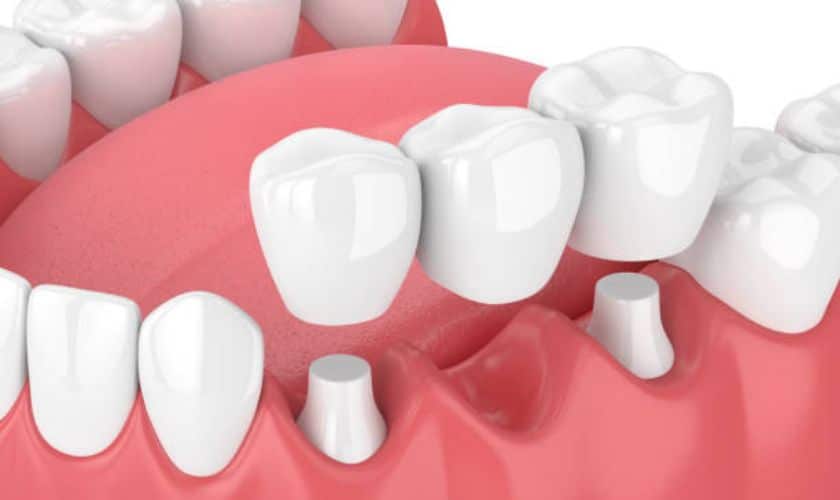
How To Remove Dental Cement From Crown?
Dental crowns are pivotal in maintaining oral health and providing functional and aesthetic benefits. However, situations may arise where you need to remove dental cement from a crown, whether due to a misplaced crown or the necessity of a replacement. At the same time, the prospect of manipulating dental work might seem daunting; fear not! This comprehensive guide will explore the various methods and precautions for safely removing dental cement from a crown. From understanding the types of dental cement to step-by-step removal techniques, we’ve got you covered. Your dental well-being is crucial, and we aim to empower you with the knowledge needed to navigate this delicate process confidently.
Dental Cement and Its Importance
Before delving into removal techniques, it’s essential to comprehend the nature of dental cement. Dental cement is a versatile adhesive used to affix crowns securely to teeth. Different types of dental cements exist, ranging from resin-based to glass ionomer. The choice of cement depends on factors such as the type of restoration and the patient’s oral health.
Why Remove Dental Cement?
Several scenarios might necessitate the removal of dental cement. Over time, changes in the surrounding teeth or the crown may necessitate adjustments to ensure a proper fit. Removing the existing cement allows for the evaluation and modification of the crown, ensuring optimal function and comfort.
Crowns may need replacement due to wear, damage, or the desire for an upgraded restoration. Complete removal of the existing cement is essential before placing a new crown to ensure proper adhesion and longevity of the new restoration. Removing the cement is necessary for repositioning the crown accurately and restoring its intended function. The development of dental decay or damage beneath the crown may require its removal for proper assessment and treatment. Removing the cement allows for thoroughly examining the underlying tooth structure, facilitating necessary dental procedures.
Understanding The Types Of Dental Cement
Understanding the types of dental cement is crucial when it comes to the removal process of a crown. Dental cement is the adhesive that bonds the crown to the tooth structure, ensuring stability and durability. Different types of dental cement are used in various clinical situations, and the choice depends on factors such as the type of restoration, the tooth’s condition, and the patient’s specific needs. Here’s an in-depth exploration of the common types of dental cement:
- Zinc Oxide Eugenol Cement: This type of cement contains zinc oxide and eugenol (clove oil derivative). Known for its soothing effect on the dental pulp, it has antimicrobial properties. It’s commonly used for temporary restorations and when a mild sedative effect is desirable.
- Glass Ionomer Cement: It combines glass powder and an organic acid. This cement bonds chemically to the tooth structure, releasing fluoride and providing tooth protection. It is suitable for permanent and temporary restorations and is commonly used for crowns in pediatric dentistry.
- Zinc Phosphate Cement: Known for its strength and long-term durability, zinc phosphate cement comprises zinc oxide powder and phosphoric acid liquid. It’s used for crown cementation, now less common due to advancements in dental materials.
Step-By-Step Guide For Safe Removal Of Dental Cement
- Gather Necessary Tools: To start the removal process, ensure you have the right tools. Common tools include dental floss, a dental explorer or scaler, a dental mirror, and a dental handpiece.
- Evaluate The Situation: Examine the crown and surrounding teeth. Note any signs of decay, damage, or discomfort. This evaluation guides the subsequent steps.
- Use Dental Floss: Dental floss can be effective in removing excess cement. Gently slide the floss between the crown and the adjacent tooth, using a sawing motion to loosen the cement.
- Dental Explorer/Scaler: A dental explorer or scaler can aid in breaking the seal of the cement. Be cautious not to exert excessive force, as this can cause damage.
- Dental Mirror: A dental mirror helps provide visibility, allowing you to monitor the removal progress and identify potential issues.
- Dental Handpiece: A dental handpiece (drill) with a fine burr may be employed for precise cement removal. This method requires skill and should ideally be performed by a dental professional.
Precautions And Considerations
- Patience is Key: Rushing the removal process can lead to complications. Take your time to ensure a careful and controlled procedure.
- Seek Professional Assistance: If unsure or uncomfortable with the removal process, it’s advisable to seek professional dental assistance. Dentists possess the expertise and tools necessary for safe removal.
- Post-Removal Care: After successfully removing dental cement, consider any post-removal care recommended by your dentist. This may include cleaning and potential temporary measures until a new crown is in place.
Removing dental cement from a crown is a delicate but manageable task with the right knowledge and tools. You can navigate this process by understanding the type of cement used, employing the correct techniques, and exercising patience. However, it’s crucial to emphasize that consulting a dental professional is always a prudent choice when in doubt or if the task seems beyond your comfort level. Your oral health is paramount, and this guide aims to empower you with the information needed to make informed decisions regarding the care of your dental crowns. With the right approach, you can ensure your dental restorations’ longevity and optimal function.



